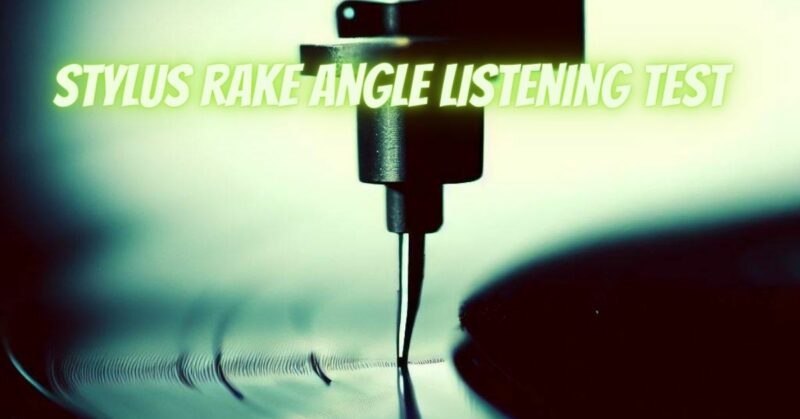When it comes to vinyl playback, the stylus rake angle plays a pivotal role in determining the accuracy of sound reproduction. The stylus rake angle, also known as the azimuth angle, affects the balance of stereo information and the overall sonic performance. In this article, we will delve into the concept of the stylus rake angle listening test, its significance in audio fidelity, and how it impacts your vinyl listening experience.
Understanding the Stylus Rake Angle
The stylus rake angle refers to the angle at which the stylus sits in the record groove. It determines how well the stylus tracks the groove and extracts audio information. Proper alignment of the stylus rake angle is crucial for achieving accurate sound reproduction and minimizing distortion.
Significance of the Listening Test:
- Stereo Imaging: A well-aligned stylus rake angle ensures that the stereo imaging is balanced and accurate. Proper alignment prevents one channel from being louder or more prominent than the other, creating a cohesive and immersive listening experience.
- Channel Separation: The stylus rake angle impacts the separation between the left and right audio channels. A misaligned angle can lead to crosstalk, where sound leaks from one channel into the other, reducing clarity.
- High-Frequency Response: Correct stylus rake angle alignment contributes to accurate high-frequency response. Proper tracking minimizes distortion and phase issues, resulting in clean and detailed sound reproduction.
Conducting the Stylus Rake Angle Listening Test:
- Choose a Test Track: Select a well-recorded test track that features a variety of frequencies, stereo panning, and instrument placements. This will help you assess the stylus rake angle’s impact on different sonic elements.
- Stylus Angle Adjustment: Make small adjustments to the stylus rake angle using alignment tools, protractors, or digital guides. Document the changes you make for reference.
- Comparative Listening: Play the test track with the initial stylus rake angle setting. Take note of the stereo imaging, channel balance, and overall sound quality. Then, adjust the stylus rake angle and repeat the listening process.
- A-B Comparison: Switch back and forth between the different stylus rake angle settings while listening to the same sections of the test track. Pay close attention to any changes in the stereo image, channel separation, and frequency response.
Fine-Tuning for Audio Excellence:
- Subtle Adjustments: When making adjustments to the stylus rake angle, remember that subtle changes can have noticeable effects on the sound. Take your time to fine-tune the angle for optimal performance.
- Reference Material: Consult alignment guidelines provided by turntable and cartridge manufacturers. These guidelines offer recommended settings that can serve as a starting point for your listening test.
- Professional Expertise: If you’re unsure about performing the stylus rake angle listening test yourself, consider seeking assistance from experienced audiophiles or professionals who specialize in turntable setup.
Elevating the Listening Experience
The stylus rake angle listening test is a valuable tool that empowers you to optimize the performance of your vinyl playback system. By carefully evaluating the impact of different stylus rake angle settings on stereo imaging, channel separation, and frequency response, you can fine-tune your setup to achieve a refined and faithful audio experience that captures the essence of the music.
The stylus rake angle listening test is an essential step in the quest for audio perfection when playing vinyl records. By conducting comparative listening sessions and making precise adjustments, you can unlock the full potential of your vinyl playback system. A balanced and accurate stylus rake angle ensures that your records come to life with unparalleled fidelity, capturing the intricacies and emotions of the music as intended by the artists.


